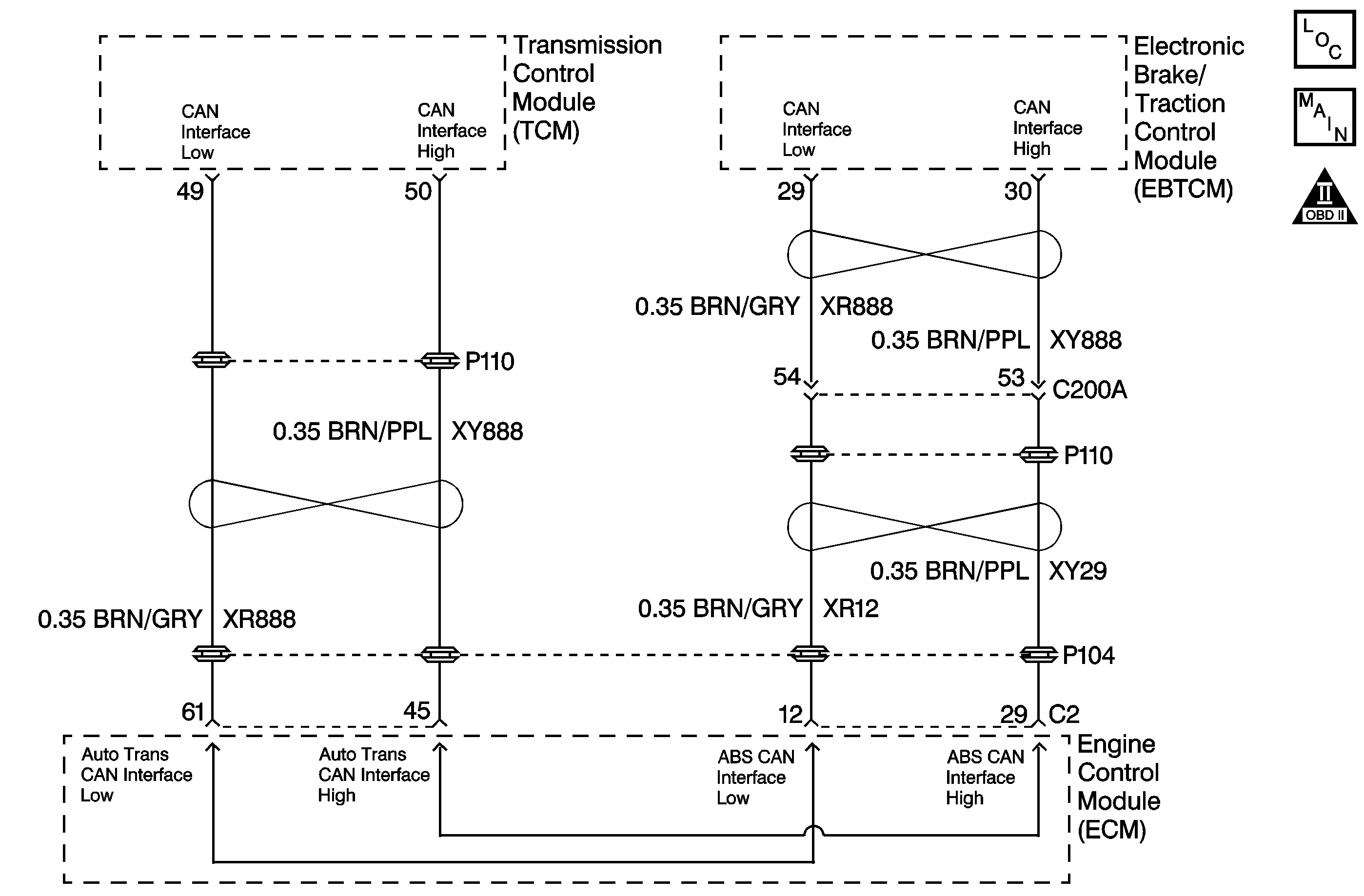
Circuit Description
The engine control module (ECM) functions as the central module for the controller area network (CAN) bus. The CAN consists of two separate conductors between the ECM and the transmission control module (TCM). Two additional conductors connect the ECM and the Electronic Brake/Traction Control Module (EBTCM). Each module sends information by toggling the circuits high or low to produce pulse-width signals, which the other modules decode.
The CAN data stream contains information such as status messages for relevant operating parameters, device requests and acknowledgments, and state-of-health messages.
When the TCM detects the loss of communication on either CAN bus line for a specified amount of time, then DTC U2100 will set. DTC U2100 is a type B DTC.
Condition for Running the DTC
The ignition is ON.
Condition for Setting the DTC
The TCM detects the loss of communication on either CAN bus line for 1 second.
Action Taken When the DTC Sets
| • | The TCM flashes the sport mode lamp and sends a MIL request to the ECM on the second consecutive drive trip that the diagnostic runs and fails. The ECM then illuminates the MIL. |
| • | The ECM records the operating conditions in the Freeze Frame at the time of the MIL request from the TCM. |
| • | The transmission operates in the default mode (maximum line pressure, command 4th gear, inhibit TCC, freeze shift adapts). |
Conditions For Clearing the MIL/DTC
| • | The ECM turns off the MIL after three consecutive drive trips during which the TCM sends no MIL request. |
| • | A History DTC clears after forty consecutive warm-up cycles, if no failures are present by this diagnostic or any other emission related diagnostic. |
| • | The scan tool clears the MIL/DTC. |
| • | The TCM cancels the DTC default mode actions when the ignition switch is Off long enough in order to power down the TCM. |
Diagnostic Aids
The CAN bus wires between the ECM and the TCM use the same circuit numbers and color code as the CAN bus wire between the EBTCM and connector C200A.
Test Description
The number below refers to the step number on the diagnostic table.
Step | Action | Value(s) | Yes | No | ||||||||||||||||||||||||||||||||||||
|---|---|---|---|---|---|---|---|---|---|---|---|---|---|---|---|---|---|---|---|---|---|---|---|---|---|---|---|---|---|---|---|---|---|---|---|---|---|---|---|---|
1 | Did you perform Powertrain On Board Diagnostic (OBD) System Check - Automatic Transmission ? | -- | Go to Powertrain On Board Diagnostic (OBD) System Check - Automatic Transmission | |||||||||||||||||||||||||||||||||||||
Important: Record the Failure Records before clearing the DTCs. Using the Clear Info function erases the Failure Records from the ECM and the TCM. Did DTC U2100 reset? | -- | Go to Intermittent Conditions in Engine Controls | ||||||||||||||||||||||||||||||||||||||
3 | Did you record any ECM Failure Records? | -- | Go to the applicable ECM DTC | |||||||||||||||||||||||||||||||||||||
4 |
Caution: When you are performing service on or near the SIR components or the SIR wiring, you must disable the SIR system. Refer to Disabling the SIR System. Failure to follow the correct procedure could cause air bag deployment, personal injury, or unnecessary SIR system repairs.
Did you find a condition? | -- | ||||||||||||||||||||||||||||||||||||||
5 | Repair the wiring as necessary. Refer to Wiring Repairs in Wiring Systems. Is the action complete? | -- | -- | |||||||||||||||||||||||||||||||||||||
6 | Replace the ECM. Refer to Engine Control Module Replacement . Is the action complete? | -- | -- | |||||||||||||||||||||||||||||||||||||
7 | Perform the following procedure in order to verify the repair:
Did DTC U2100 reset? | -- | System OK |
